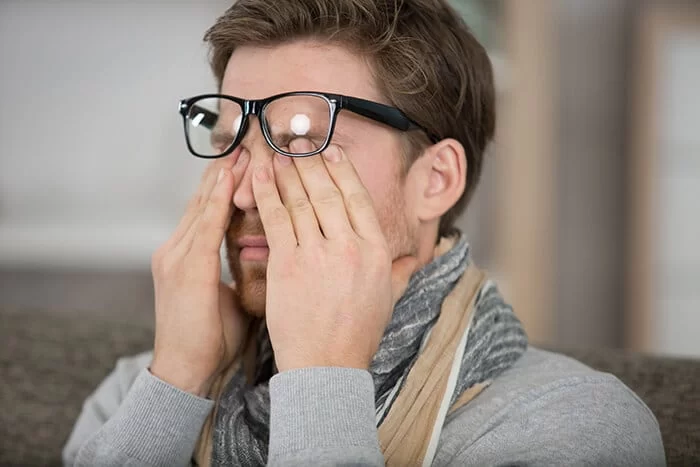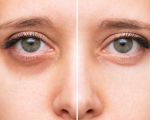
Understanding the Causes of Eye Fatigue and How to Relieve It Effectively
We've all been there – hours spent staring at a screen, reading, or even just daydreaming, and suddenly, our eyes start to feel heavy. A dull ache creeps in, the sharpness of our vision fades, and we can't seem to focus as well. This, my friends, is the all-too-familiar experience of eye fatigue. But have you ever wondered what exactly causes it and how you can effectively relieve it? Let me take you through this journey of understanding eye fatigue and provide some actionable tips that can help you feel better.
What Exactly Is Eye Fatigue?
Eye fatigue, also known as asthenopia, is a condition where the eyes become tired from intense use. It’s often the result of prolonged activities that require intense focus, such as reading, using a computer, or staring at your phone for long periods. It might sound like a trivial issue, but if left unaddressed, eye fatigue can lead to bigger problems like headaches, blurry vision, or even long-term strain on your eye muscles.
The Main Causes of Eye Fatigue
Many of us don’t realize that small habits can lead to significant eye strain over time. Let’s break down some of the key causes:
1. Extended Screen Time
We live in a digital world where screens are unavoidable. Whether it’s for work, social media, or entertainment, we spend hours on our computers, smartphones, and tablets. This constant exposure to digital screens can lead to digital eye strain, which manifests as dry eyes, headaches, and blurry vision. The blue light emitted by screens may also contribute to discomfort.
2. Poor Lighting Conditions
Lighting plays a crucial role in eye health. If you’re reading or working in dimly lit spaces, your eyes have to work harder to focus, leading to strain. On the other hand, harsh lighting or glare from windows can also make it difficult for your eyes to adjust, causing discomfort. Both extremes can result in eye fatigue.
3. Incorrect Posture
Believe it or not, your posture while reading or using a computer can contribute to eye fatigue. Slouching or sitting too close to your screen not only strains your back and neck but also forces your eyes to work harder to focus. A poor viewing angle can lead to eye discomfort.
4. Lack of Blinking
When we focus on something for a long time, we tend to blink less frequently. This is especially common when we’re engrossed in reading or staring at a screen. Blinking helps keep our eyes moist and refreshed. Without it, our eyes dry out, leading to irritation and fatigue.
How to Relieve Eye Fatigue
Now that we understand the causes of eye fatigue, let’s look at some practical ways to relieve it. Incorporating these tips into your daily routine will help keep your eyes refreshed and reduce strain:
1. Follow the 20-20-20 Rule
One of the most effective ways to reduce digital eye strain is by following the 20-20-20 rule. Every 20 minutes, take a 20-second break and look at something 20 feet away. This simple technique allows your eyes to rest and refocus, reducing the risk of fatigue.
2. Adjust Your Screen Settings
If you work on a computer or use your phone for extended periods, it’s essential to adjust the brightness and contrast settings. Too much brightness can strain your eyes, while too little can make it hard to see. Consider using a blue light filter or a screen protector to reduce glare and harmful light exposure.
3. Improve Your Posture
Maintain a comfortable distance from your screen (about 20-30 inches), and adjust the angle of your screen so that your eyes are level with the top of it. Sit up straight and avoid slouching – your neck and back will thank you! This reduces the strain on your eyes and helps you stay comfortable for longer periods.
4. Blink More Often
It may sound simple, but remembering to blink regularly can make a big difference. If you’re using a computer or reading for a long time, consciously make an effort to blink more often to keep your eyes moist. Consider using lubricating eye drops if your eyes feel dry.
5. Take Regular Breaks
Even if you’re not experiencing noticeable eye fatigue, it’s important to take breaks throughout the day. Step away from your screen, stretch, or walk around. This not only helps your eyes rest but also gives your brain a chance to recharge.
6. Adjust Lighting
Ensure that your work area is well-lit, but avoid harsh lighting that causes glare on your screen. Natural light is best, so try to position your workstation near a window. If you need artificial lighting, opt for softer, diffused lights rather than bright, direct ones.
Real-Life Story: How I Overcame Eye Fatigue
Let me share a quick personal story. A few months ago, I found myself constantly dealing with headaches and blurry vision. I blamed it on stress or lack of sleep, but the real culprit was the long hours I was spending in front of my computer screen. After talking to an eye specialist, I learned about digital eye strain and how I could reduce my symptoms. I started following the 20-20-20 rule, adjusting my screen settings, and taking more frequent breaks. Within a few days, my symptoms improved dramatically. It was a wake-up call – small changes really can make a big difference!
Conclusion
Eye fatigue is a common problem, but with a few simple adjustments to our daily routines, we can alleviate the discomfort and protect our eye health. Whether it’s reducing screen time, improving lighting, or remembering to blink more, taking care of our eyes should be a priority. Don't let eye strain become a long-term issue – take proactive steps today to ensure your vision stays sharp and comfortable. And if you're experiencing persistent discomfort, consider reaching out to an eye care professional for personalized advice and treatment options. If you're in need of quality eye care, make sure to visit Eye Docs for trusted clinics and services near you!








